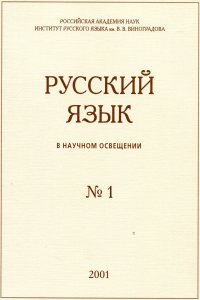A tale of two auxiliaries: third person forms of byti in Old Russian
Abstract:
The current estimates for the period when the zero copula ‘BE’ was grammaticalized in the history of Russian, date this process to the 15th–18th centuries. This is a mistake inspired by not properly chosen text samples that do not capture its evolution in the Old Russian period. The zero copula existed already in Early Old Russian, the key is provided by the perfect construction, where the absence of an overt BE-auxiliary signaled the agreement value ‘3rd person’. Andrej A. Zaliznjak (1993, 2008) correctly linked this feature with the grammaticalization of the enclitic forms of the 1st and 2nd person BE-auxiliaries
and the lack of standard 3rd person enclitic BE-forms. However, there are two contentious issues in his description: 1) Zaliznjak’s point that all Old Russian dialects lacked overt 3rd person perfect auxiliaries from the very beginning of the written period is confuted by South Old Russian texts from the first half of the 12th century. 2) Zaliznjak postulated complementary distribution of overt clausal subjects and overt 3rd person perfect auxiliaries for hybrid Old Russian texts which combined bookish and colloquial features, but a distribution like this is only traced in some Old Novgorod 12th-century texts. I compare five Old Russian authorial texts from the 12th century, representing three dialects, and prove that weak-stress and stressed 3rd person auxiliaries had a different distribution. I argue that one must distinguish two homonymic constructions with an l-participle and present tense forms of the BE-auxiliary. The standard Russian perfect, labeled ‘Perfect I’ in this paper, used weak-stress auxiliaries that had person-and-number agreement and licensed an alternation of zero and overt weak-stress 3rd person BE-forms; this alternation lacked semantic motivation, but optional overt 3rd person Perfect I auxiliaries disappeared in the mid-12th century. The homonymic Perfect II construction used stressed 3rd person BE-auxiliaries and had only number, but not person agreement. Overt stressed 3rd person BE-auxiliaries expressed existential-locative or verificational semantics, therefore alternation of zero and overt 3rd person auxiliaries in Perfect II was impossible. Corresponding meanings can be expressed in Modern Russian as well, but in Modern Russian, the copular uses of BE are opposed to the so-called full-BE uses, i.e. existential-locative and verificational, while Old Russian could express such meanings both with the full BE-forms and with stressed BE-auxiliaries in the Perfect II construction.


